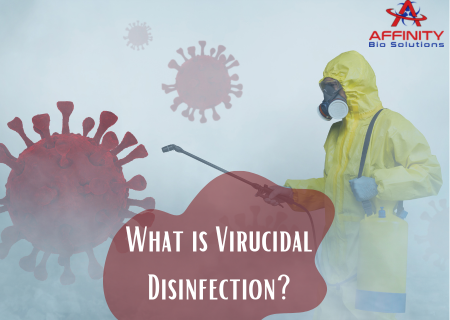 Virucidal disinfection is a critical process in the fight against infectious diseases, particularly in the current global context where the COVID-19 pandemic has underscored the importance of maintaining high standards of hygiene. The term “Virucidal” refers to something that is capable of killing or inactivating viruses. Therefore, viricidal disinfection is the process of eliminating or deactivating viruses on surfaces or in the air using specific substances or methods. In the wake of the global pandemic, the importance of maintaining a clean and safe environment has never been more emphasized.
Virucidal disinfection is a critical process in the fight against infectious diseases, particularly in the current global context where the COVID-19 pandemic has underscored the importance of maintaining high standards of hygiene. The term “Virucidal” refers to something that is capable of killing or inactivating viruses. Therefore, viricidal disinfection is the process of eliminating or deactivating viruses on surfaces or in the air using specific substances or methods. In the wake of the global pandemic, the importance of maintaining a clean and safe environment has never been more emphasized.
Viruses are microscopic organisms that can cause a variety of diseases in humans, from the common cold to more severe illnesses like influenza, HIV/AIDS, and COVID-19. They are highly and can survive on surfaces for varying lengths of time, depending on the type of virus. This is why regular and thorough disinfection is crucial in preventing the spread of viral infections.
Virucidal disinfectants are substances that have been scientifically proven to kill or inactivate viruses. They come in various forms, including liquids, wipes, sprays, and aerosols, and can be used on a wide range of surfaces. These disinfectants work by disrupting the protective outer layer of the virus, rendering it incapable of infecting human cells.
The effectiveness of a viricidal disinfectant depends on several factors. Firstly, the disinfectant must be used correctly, following the manufacturer’s instructions. This includes using the correct concentration and allowing the disinfectant to remain on the surface for the recommended contact time. Secondly, the disinfectant must be suitable for the type of surface being cleaned. Some disinfectants may damage certain materials or may not be effective on porous surfaces. Lastly, the disinfectant must be capable of killing the specific type of virus in question. Not all disinfectants are effective against all types of viruses.
In addition to using viricidal disinfectants, other methods can also be used to achieve Virucidal disinfection. For example, heat and ultraviolet (UV) light are both effective at killing viruses. Heat disinfection involves using high temperatures to kill viruses, while UV disinfection uses UV light to destroy the virus’s genetic material. Both methods are commonly used in healthcare settings to disinfect medical instruments and equipment.
It’s important to note that while Virucidal disinfection is a powerful tool in the fight against viruses, it is not a substitute for other preventive measures. Regular hand washing, wearing masks, and practicing social distancing are all crucial in preventing the spread of viral infections.
Conclusion
In conclusion, Virucidal disinfection is a vital process in controlling and preventing the spread of viral diseases. It involves the use of specific disinfectants or methods that are capable of killing or inactivating viruses. However, for it to be effective, the disinfectant must be used correctly, be suitable for the surface being cleaned, and be capable of killing the specific type of virus. While Virucidal disinfection plays a significant role in maintaining hygiene, it should be used in conjunction with other preventive measures to ensure comprehensive protection against viruses.
Contact Affinity Bio Solutions for All Your Professional Biohazard Cleanup Needs
- Biohazard Cleanup & Removal
- Crime Scene Cleanup | Trauma Scene Cleanup
- Unattended Deaths & Decomposition
- Suicide Cleanup
- Medical Waste Pick-Up, Transport and Disposal
- Water Damage | Flood Extraction
- Hoarded Environment & Hoarder Home Cleanup
- Vehicle Accidents | Vehicle Biohazard Cleanup
- Bodily Fluids | Blood Cleanup
- Odor Remediation | Odor Removal
- Homeless Encampment Cleanup & Biohazard Removal
- Abandoned Building and Foreclosure Cleanout
- Pest Removal in Arizona
